- today
- perm_identity Rastamax
- label Tips
- favorite 2 likes
- remove_red_eye 4208 views
- comment 0 comments
Use of Trichoderma Harzianum for biological mold control
Introduction
Indoor cultivation, whether dedicated to the production of ornamental plants, fruits or vegetables, often presents a major challenge: moulds. These unwanted fungal organisms can quickly proliferate in an enclosed, humid environment, causing crop damage, reducing yields and compromising product quality. Furthermore, the use of chemical pesticides to control these infestations has major disadvantages, both for the environment and for human health. This is where biological control comes into play.
1.1 Overview of the problem of mold in indoor cultivation
The presence of mold in indoor grows is a common problem that can have disastrous consequences for growers. Indoor growing environments often provide ideal conditions for mold growth: high humidity, stable temperatures, and the absence of regulators such as predators or UV radiation. These factors promote their rapid spread and can lead to significant losses.
Molds can infect all parts of the plant, including roots, stems, leaves, flowers and fruits. They can cause rotting, staining, and even complete decomposition of the affected parts. Apart from physical damage, molds can also produce toxins that are harmful to plants, reducing their vitality and ability to grow normally.
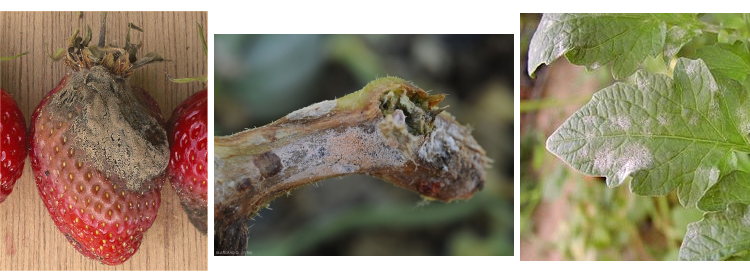
The main mold species found in indoor grows are often genera such as Botrytis, Fusarium, and Oidium, among others. Each species can have specific effects on plants, but they all share the ability to spread quickly and cause significant damage.
It is in this context that biological control offers a promising and environmentally friendly approach to controlling mold infestations. The use of natural antagonistic organisms, such as Trichoderma harzianum , allows mold to be tackled effectively while minimizing the risks associated with the use of chemicals. In the following sections, we will explore in detail the role of Trichoderma harzianum in the preventive and curative biological control of molds.
1.2 The importance of biological control for a sustainable approach
Faced with growing concerns about the environmental and health impacts of chemical pesticides, farmers, horticulturists and growers from all walks of life are increasingly looking for alternative and sustainable solutions to protect their crops. Biological control is thus emerging as a promising method to meet these challenges. Unlike synthetic pesticides, biological control relies on the use of living organisms or natural products to control pests and diseases.
One of the main advantages of biological control is that it specifically targets harmful organisms while preserving beneficial insects and ecosystems. By using specific biological control agents, such as Trichoderma harzianum, growers can attack harmful molds without upsetting the ecological balance of their growing environment.
Additionally, biological control reduces the likelihood of chemical resistances developing in pests, which is a common problem with traditional pesticides. By integrating biological control into their management strategies, growers can prevent the appearance of resistant strains and maintain the effectiveness of treatments over the long term.
By adopting a sustainable approach based on biological control, growers contribute to the preservation of biodiversity and soil health. In addition, they respond to growing consumer expectations for environmentally friendly agricultural and horticultural products, which can translate into economic benefits in terms of the commercial valuation of their products.
1.3 Overview of Trichoderma harzianum as a biological control agent
Among biological pest control agents u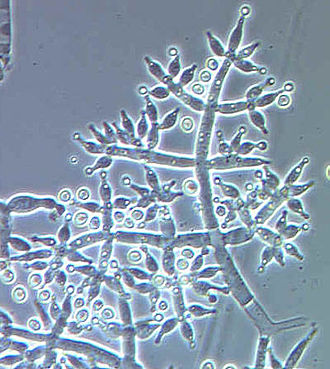 sed to control moulds, Trichoderma harzianum stands out as one of the most effective antagonistic organisms. Trichoderma harzianum is a microscopic fungus that is found naturally in soils and organic substrates. It is well known for its ability to establish an antagonistic relationship with pathogenic molds , thereby inhibiting their development.
sed to control moulds, Trichoderma harzianum stands out as one of the most effective antagonistic organisms. Trichoderma harzianum is a microscopic fungus that is found naturally in soils and organic substrates. It is well known for its ability to establish an antagonistic relationship with pathogenic molds , thereby inhibiting their development.
The mode of action of Trichoderma harzianum is based on several mechanisms. First, this fungus produces enzymes that break down the cell wall of molds, leading to their lysis and death. Additionally, Trichoderma harzianum releases volatile metabolites that directly inhibit mold growth. Finally, it also stimulates the immune system of plants, thus strengthening their resistance to attacks by pathogens.
Another major benefit of Trichoderma harzianum is its versatility. It can be used both as a preventive biological control agent, applying it early in the crop cycle to prevent the establishment of molds, as well as a curative approach to combat infestations already present. This flexibility makes it an invaluable tool for growers looking to maintain a healthy and productive environment for their indoor grows.
In the following sections, we will explore in detail how Trichoderma harzianum can be used in prevention and intervention to effectively control mold in indoor crops, as well as the advantages and limitations of its use.
Understanding Trichoderma harzianum
Trichoderma harzianum is a filamentous fungus of the class Ascomycetes, belonging to the genus Trichoderma. It has been widely studied for its antifungal properties and its potential as a biological control agent in agriculture and horticulture. Understanding this fungus is key to taking full advantage of its mold control abilities.
2.1 What is Trichoderma harzianum?
Trichoderma harzianum is a saprophytic microorganism, which means that it feeds mainly on decaying organic matter. It is commonly found in agricultural soils and organic substrates, where it plays a crucial role in breaking down dead plant matter, thereby promoting nutrient recycling.
The fungus is said to show rapid growth and a great ability to colonize plant roots. It can form a network of mycelium around the roots, establishing a symbiotic relationship called mycorrhiza. This symbiosis would allow Trichoderma harzianum to benefit from the sugars produced by the plant, while the plant would benefit from the improvement in its access to nutrients and water from the soil. In addition, this interaction would strengthen the resistance of the plant to pathogens, including molds.
2.2 Mechanisms of action of Trichoderma harzianum against molds
Trichoderma harzianum exerts its antifungal effect using different mechanisms that harm pathogenic molds. One of the main actions is the production of extracellular enzymes, such as chitinases and glucanases, which degrade the main components of mold cell walls. This degradation weakens the structure of the moulds, leading to their death.
In addition to this, Trichoderma harzianum produces secondary metabolites, including antibiotics and volatile metabolites, which have toxic effects on molds. These metabolites disrupt the vital processes of pathogens, such as cellular respiration and protein synthesis, leading to their inhibition and elimination.
In addition to its antifungal mechanisms of action such as the production of enzymes and toxic metabolites, Trichoderma harzianum has a particularly interesting and unique ability to control mold: the strangulation ability.
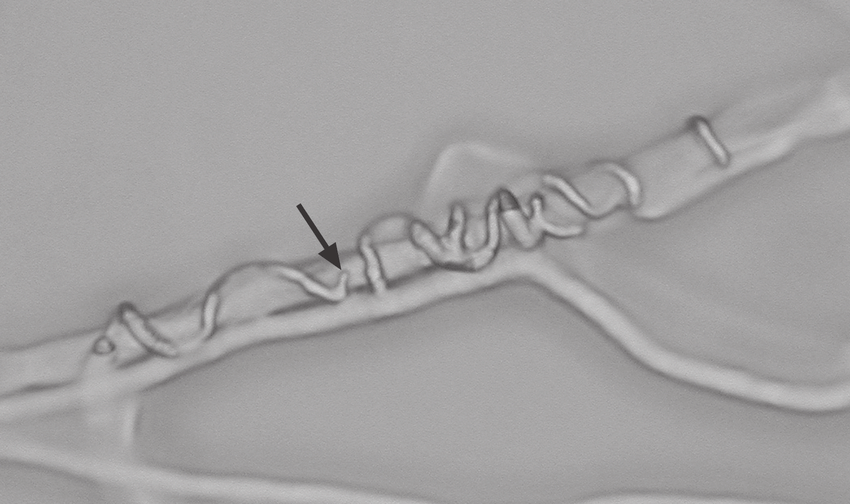 When in the presence of pathogenic molds, Trichoderma harzianum develops an aggressive and specialized mode of combat. It produces specific morphological structures called "coils", also known as "spirals". These coils are coiled filamentous structures that look like ropes or lassos.
When in the presence of pathogenic molds, Trichoderma harzianum develops an aggressive and specialized mode of combat. It produces specific morphological structures called "coils", also known as "spirals". These coils are coiled filamentous structures that look like ropes or lassos.
These structures can be sent in the direction of various pathogens. When they reach the molds they then wrap themselves around their hyphae, which are the filamentous structures of fungi. This strangulation action allows Trichoderma harzianum to physically smother molds, interrupting their growth and feeding.
This strangulation ability is a major asset for Trichoderma harzianum, as it allows it to attack competing molds directly, hindering their development and preventing them from spreading in the growing environment. In addition, this physical approach to control complements the mushroom's other antifungal mechanisms of action, thus enhancing its overall effectiveness.
It is important to note that the strangulation ability of Trichoderma harzianum may vary depending on the specific fungal strain, environmental conditions, and the microbial community composition of the soil or growing medium. This is why it is essential to select quality products containing specific strains of Trichoderma harzianum to maximize the benefits of this biological approach to mold control.
2.3 Advantages and limitations of using Trichoderma harzianum
The use of Trichoderma harzianum as a biological control agent has several significant advantages. First of all, since it is a microorganism naturally present in soils, its use is easily integrated into agricultural ecosystems and does not cause environmental pollution. In addition, as it acts specifically against moulds, it does not affect beneficial insects and other non-target organisms, thus preserving biodiversity.
Another interesting characteristic of Trichoderma harzianum is its versatility. It can be used in conventional, organic or hydroponic agriculture. Its application can be done using a variety of methods, including sprays, seed coatings or applications in the growing medium.
However, it is important to note that the performance of Trichoderma harzianum may vary depending on environmental conditions, such as temperature, soil or substrate pH, and humidity. In addition, to obtain optimal results, it is essential to follow the specific recommendations of the product and to adapt it according to the needs of each crop.
In sum, Trichoderma harzianum has enormous potential as a biological control agent to control mold in indoor cultivation. Its ability to act in a specific way, its natural origin and its multiple mechanisms of action make it a valuable ally for growers looking for long-lasting and effective solutions to protect their crops against fungal infestations.
Preventive use of Trichoderma harzianum
Preventive biological control with Trichoderma harzianum offers growers a proactive method to prevent the establishment and spread of mold in their indoor crops. By using this antagonistic fungus early in the crop cycle, growers can boost the health of their plants and reduce the risk of fungal infestations.
3.1 Preventing mold from the start of the crop cycle
Preventive application of Trichoderma harzianum is a recommended practice for growers who wish to maintain a healthy environment for their crops from the start of the crop cycle. By using products containing Trichoderma harzianum spores, growers can seed their soil or growing medium with this beneficial fungus before planting. This allows Trichoderma harzianum to quickly colonize the root system of young plants and establish an early symbiotic relationship.
When Trichoderma harzianum is present in abundance in the substrate, it acts as a first line of defense against pathogenic molds that may attempt to colonize the roots. By developing a preventive presence in the substrate, Trichoderma harzianum occupies the root space and thus limits the establishment sites for harmful molds, but it can also be useful in other circumstances.
3.2 Methods of applying Trichoderma harzianum for prevention
Trichoderma harzianum can be applied in different ways for preventive biological control. Products containing this beneficial mushroom are usually available as powders, granules, or liquid suspensions. The most common application methods include:
a. Seed coating: Seeds are coated with a solution containing Trichoderma harzianum before planting. This ensures early colonization of the root system from the start of plant growth.
b. Soil or substrate application: Trichoderma harzianum can be mixed with soil or growing medium before planting. This allows the fungus to quickly colonize the substrate and prepare to protect the roots against pathogenic molds.
vs. Irrigation with Trichoderma harzianum suspensions: Trichoderma harzianum spores can be suspended in water and used for crop irrigation. This method ensures a homogeneous distribution of the fungus in the substrate and around the roots.
d. Cuttings and healing: Trichoderma harzianum can be used to protect cuttings during their taking/rooting and during the healing of any open wounds. Cuttings are often vulnerable to fungal infections when cut and inserted into the substrate. Applying Trichoderma harzianum around cutting cuttings helps prevent infection and promote healthy rooting.
3.3 Factors to be considered during preventive use
Although preventive use of Trichoderma harzianum is an effective approach, certain factors should be considered to maximize its effectiveness:
a. Product Quality: It is essential to choose quality products containing specific strains of Trichoderma harzianum that have been shown to be effective against the targeted harmful molds.
b. Compatibility with other cultural practices: The use of Trichoderma harzianum must be integrated into an overall crop management system. It is important to ensure that other cultural practices, such as the use of phytosanitary or other biological agents, do not compromise the effectiveness of Trichoderma harzianum.
vs. Growing environment: Environmental conditions, such as temperature, humidity and pH of the soil or substrate, can influence the growth and activity of Trichoderma harzianum. It is essential to provide favorable conditions for its development.
By combining a preventative application of Trichoderma harzianum with other good cultural practices, growers can create an environment conducive to healthy plant growth, while reducing the risk of mold infestations early in the crop cycle.
Curative use of Trichoderma harzianum
Curative biological control with Trichoderma harzianum is an effective approach to combat mold infestations already present in indoor crops. Targeted use of this antagonistic fungus can reduce the impact of pathogenic molds on plants and possibly restore the health of affected crops.
4.1 Mold detection and identification of problematic strains
The first step for a successful curative biological control is the early detection of molds and the identification of the strains responsible for the infestation. Careful observation of plants can reveal characteristic signs of mold, such as spots, rots or symptoms of decay. It is important to correctly diagnose the type of mold involved in order to choose a suitable means of control, however an advantage of Trichoderma harzianum lies in its ability to interfere with many pathogens.
4.2 Application of Trichoderma harzianum to combat existing molds
Once pathogenic molds have been detected, Trichoderma harzianum can be applied in a targeted or global manner to combat their spread. In addition to the methods of application to the soil or to the substrate, a specific method to combat molds present on the aerial parts of plants is foliar application.
For foliar application, Trichoderma harzianum is made into a liquid solution containing the spores of the fungus. This solution can be sprayed directly on the leaves and stems of plants affected by mold. Foliar application allows Trichoderma harzianum to attach to the aerial parts of the plant and begin to compete with pathogenic molds for space and resources, as well as to secrete enzyme inhibitors.
When Trichoderma harzianum is applied to control existing moulds, its role is not limited to combating pathogens only. Once harmful molds are eliminated or controlled, Trichoderma harzianum can continue to colonize the surface of leaves and stems, establishing a beneficial relationship with the plant.
As a colonizer of aerial parts, Trichoderma harzianum enhances the plant's ability to resist future environmental stresses and pathogen attacks. It acts as a living protective layer, forming a physical barrier against mold and other possible pathogens.
Additionally, Trichoderma harzianum continues to release antifungal metabolites, helping to maintain an inhospitable environment for mold and preventing new infections. This persistent presence of Trichoderma harzianum on the aerial parts of the plant helps to strengthen the immunity of the crop, thus improving its resilience to environmental stresses.
It is important to note that the persistence of Trichoderma harzianum on the plant may vary depending on environmental conditions and competition with other microorganisms.
Where possible foliar application of Trichoderma harzianum can be repeated at regular intervals to provide continued protection against mold and promote healthy recovery of affected plants.
Integration of Trichoderma harzianum in a biological control strategy
Integrating Trichoderma harzianum into an overall biological control strategy offers additional benefits by enhancing the effectiveness of this sustainable approach. By combining Trichoderma harzianum with other biological agents and incorporating it into responsible growing practices, growers can maximize the benefits of this environmentally friendly method of mold control.
5.1 Combining Trichoderma harzianum with other biological agents
By combining Trichoderma harzianum with other complementary biological agents, such as predators or pest parasitoids, growers can take an integrated biological control approach. Biological agents working in synergy make it possible to control several pests simultaneously, thus helping to reduce the overall pressure exerted by harmful organisms on the crop.
For example, by using Trichoderma harzianum to control mold and introducing predatory insects or entomopathogenic nematodes to control insect pests, growers create a natural balance in their growing environment. This ecological approach preserves biodiversity and minimizes potential disturbances in the crop ecosystem.
5.2 Use in addition to good cultural practices
The integration of Trichoderma harzianum into responsible and sustainable cultural practices reinforces the effectiveness of biological control. Practices such as crop rotation, disinfection of equipment, optimal management of irrigation and use of balanced fertilizers help create an environment favorable to healthy plant growth and the competitiveness of Trichoderma harzianum.
For example, the use of large quantities of mineral fertilizers can limit the development of the beneficial fungus and thus reduce its effectiveness. In addition, proper irrigation management avoiding excess moisture can help minimize favorable conditions for pathogenic mold growth.
By integrating Trichoderma harzianum into a responsible cultivation approach, growers optimize the effectiveness of biological control and promote healthy and robust growth of their indoor crops.
Conclusion
Biological control with Trichoderma harzianum offers a promising and sustainable approach to preventing and combating mold infestations in indoor cultivation. This beneficial fungus exhibits unique antifungal properties and multiple mechanisms of action that help protect plants from damage caused by fungal pathogens.
In this article, we have explored the different facets of the use of Trichoderma harzianum in preventive and curative biological control. Preventing mold from the beginning of the crop cycle by seeding the soil or substrate with Trichoderma harzianum creates a natural protective barrier around the roots of the plants. In the event of infestations already present, the targeted application of Trichoderma harzianum, including foliar application, offers an effective solution to combat mold and promote crop recovery.
By integrating Trichoderma harzianum into an overall biological control strategy, combining it with other biological agents and integrating it into responsible cultural practices, growers can maximize the benefits of this ecological approach. This approach preserves biodiversity, minimizes environmental impacts and promotes sustainable and economically viable agriculture.
By embracing the use of Trichoderma harzianum for biological mold control, growers are encouraged to encourage a responsible and sustainable approach to both indoor and outdoor cultivation. By replacing chemical pesticides with organic solutions, we are taking a step towards preserving the environment and producing healthier food.
Ultimately, using Trichoderma harzianum to control mold in any type of crop represents a step towards more nature-friendly agriculture, benefiting growers, consumers and our planet as a whole.
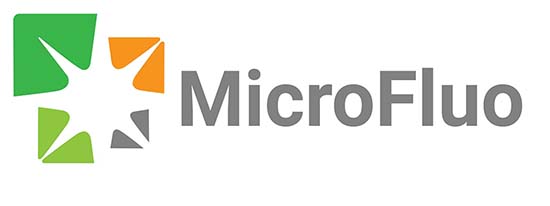

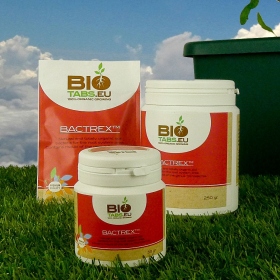


Comments (0)